Why the Second Brain Will Blow Your Mind: Video Interview with Philip Shepherd
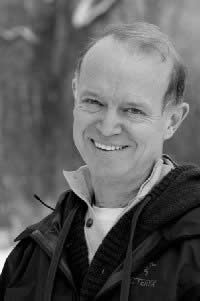
If you’ve never heard of the second brain then the ideas and information you’re about to read will literally blow your mind. It certainly blew my tiny little mind reading about the second brain for the first time in The Sun Magazine’s article Philip Shepherd on the Brain in Our Belly.
The idea of the second brain is still new to many people like me, but even if you have heard of the second brain you may have dismissed it as new age nonsense. Not that I hold that against you because the findings about the second brain go against everything we’ve always been taught about how the center of our being and knowledge is in our head.
But the fact is that the study of the second brain is now an actual science called neurogastroenterology and this second brain in your belly can think, remember, decide and act with no help from the brain in the head.
All our lives we’ve been told to use our brain to think out way out of problems. But it turns out that thinking through emotional problems and trying to solve them with the brain in your head usually make you feel worse. Psychologists call constantly wondering why things happen and how we can fix them ruminating and it’s a common cause of depression.
Regular readers will know about the 52 Exercises quest I came up with to combat a midlife crisis. But I’ve also been focusing on mindfulness and mediation to think less, get in touch with my emotions more and start being instead of constantly doing.
I’m working hard to get in touch with my emotions, which sounds so simple but isn’t. Being emotional or sensitive is not encourage in our modern world and if you’ve been suppressing emotions for years they are probably buried deep.
So reading about the second brain and Philip Shepherd’s book New Self, New World: Recovering Our Senses in the Twenty-First Century caught my attention. It explained why we end up feeling so disconnected from our emotions and ourselves and showed how we can correct that experience.
I immediately bought New Self, New World and lined up an exclusive video interview with Philip Shepherd. The wonders of modern technology allow me to talk with him from his home in Toronto, Canada while I was at my home on the Sunshine Coast in Australia.
I hope you’ll be able to watch this video in your home today wherever you are in the world and that it will help us all realise that technology is a wonderful thing but that the greatest knowledge we have is inside ourselves. That the brain in our head is amazing but that the brain in our belly or the second brain must be acknowledged too.
The interview on the second brain covers:
- Why Philip Shepherd thinks of the second brain as our first brain;
- Why the second brain is not secondary;
- How ancient cultures acknowledged the second brain as the center of self ;
- Why modern culture has struggled to accept the existence of the second brain;
- How a sense of isolation is often caused and deepened by the lack of connection with our second brain;
- The dangers of ignoring the second brain;
- How culture shock can be worst when you return home after a trip, not when you are travelling;
- How the idea for the book New World New Self came to Philip on vacation and electrified him;
- How it hurt so much not to write the book that he wrote it four times before finally getting it published;
- Why cars have two headlights;
- How hara (the Japanese word for belly) is the foundation of truth;
- How the brain in the head is where you can consciously think and the second brain or the brain in the belly is where you can consciously be;
- How the way you inhabit your body determines how you see and feel the world around you;
- The advantages of getting in touch with the second brain;
- Why not being in touch with your second brain makes you be self conscious and self judgmental (and maybe that could lead to low self esteem;
- How we have a choice between trying to get things right or being alive to what is;
- How your sense of being whole comes from the second brain and being totally present to the world;
- How our addiction to knowledge (facts, information, statistics etc) is holding us back, not advancing us;
- Why knowledge is dangerous without self-knowledge;
- Why we think we know who we are but often don’t really (clue: we are not just our age, religion, marital status, favourite color etc and maybe that’s why it’s so hard to know how to tell people the truth about yourself);
- How who you are is revealed to you in the present;
- How we have to constantly accept that we are never the same because our circumstances are always changing and that changes us;
- How there may be a whole side of yourself that you haven’t explored that can be explored using your second brain;
- Why exploring your inner self is not encouraged in our society;
- Why it’s easier to allow yourself to feel numb rather than to allow yourself to truly feel;
- Why we don’t allow ourselves to feel what is because we think we shouldn’t feel that way;
- How it’s “from that place of feeling deeply that your whole life cracks open and your purpose is not just revealed but you become capable of living it”;
- How the center of our thinking self migrated from deep in the belly to our head;
- What exercises we can do to get in touch with our second brain and our center of being to become more whole;
- Why Philip’s work is about illuminating our senses and creating space in our bodies to feel ourselves and feel the world;
- How to eliminate congestion in your mind and feel more whole in your body in the present moment;
- How coming to rest in the present moment makes the whole world change;
How to Find Out More About the Second Brain and Philip Shepherd
Read The Sun article The Brain in Your Belly on Philip’s website and subscribe to his newsletter to find out more about his work and upcoming workshops.
Buy his amazing book New World, New Self available in print and Kindle on Amazon. It’s packed with exercises like the elevator and the hour glass which we talk about at the end of the interview to help you get in touch with your second brain.
I’ll be keeping you tuned with my progress on getting in touch with my second brain using Philip’s exercises and I hope you’re as excited as me about getting in touch with your second brain and learning why you don’t need to use your head to get ahead.
Have you ever heard of the second brain before? Do you have any tips for people who want to explore their second brain?



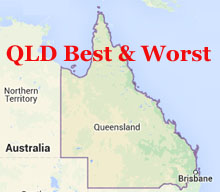
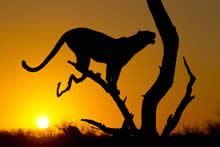
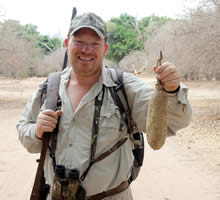
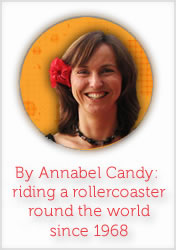


There’s lots of food for thought here, I especially like the idea of opening up the body, finding space. I have read about all the neurotransmitters and receivers in the gut and it does make sense, I do feel emotions in my tummy… and trust my gut, as it were.
I’m on a mission to slow down, slow, slow, do less and make space in life to be… on my computer I have a sign saying: ‘Say no to everything.’ So that I can give myself space to feel my emotions and let them pass.
Hi Seana,
That’s great you feel that and I love the sign. I need to minimize computer time to make time for just being and getting in touch with that second brain and all those emotions, no matter how scary some of them may feel at first!
This is so interesting and I need to learn more about this. One thing that has really resonated with me, with the Mindfulness I do, is the observing self … that there is the self, but also the observing self. That essence that makes you, you … and that is always there. It’s hard to explain but I think you probably know what I mean. When I finally got it, as in it finally made sense to me, which was about six weeks into my first Mindfulness training, it was a true ‘Oh my God’ moment. Literally changed my life. Thanks, I have so much more to explore.